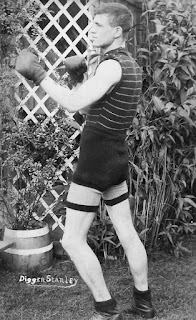British boxing legend Randolph Turpin chose picturesque Gwrych Castle as his training base ahead of his historic world-title win over Sugar Ray Robinson
The great Sugar Ray Robinson was renowned for his lavish lifestyle. In his heyday, he splashed cash freely and was used to the best of everything. Luxury hotels, stylish clothes, fast cars and an entourage to rival Floyd Mayweather’s.
When he arrived in England to train for his maiden world middleweight title defence against Leamington’s Randolph Turpin in 1951, the quarters that had been arranged for him shocked Robinson. He trained and boarded at the Star & Garter pub in Windsor, which he later called ‘a dump’ in his autobiography.
‘The stairway creaked. The door handle was loose. There were plaster cracks in the walls. The two beds were like cots,’ he recalled. ‘Downstairs, the jukebox was blaring. And the customers were yelling and pounding their glasses on the bar. I never got to sleep until long after midnight.’







